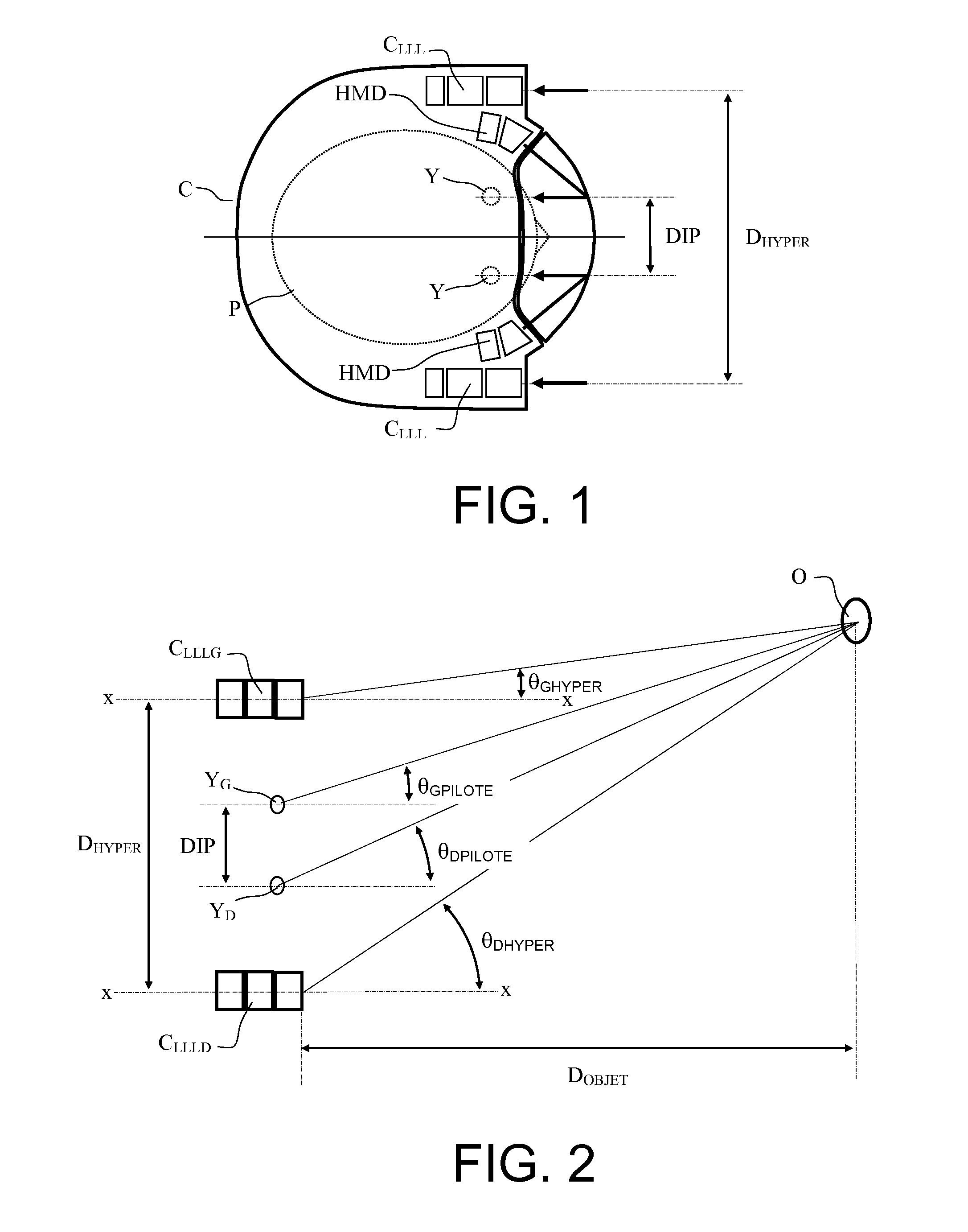Method for Correcting Hyperstereoscopy and Associated Helmet Viewing System
a hyperstereoscopy and viewing system technology, applied in image enhancement, image analysis, instruments, etc., can solve the problems of hyperstereoscopy being perceived as troublesome by users, the size of the camera is too big, and the natural separation dip is difficult to comply with
- Summary
- Abstract
- Description
- Claims
- Application Information
AI Technical Summary
Benefits of technology
Problems solved by technology
Method used
Image
Examples
Embodiment Construction
[0023]The aim of the method according to the invention consists in obtaining natural stereoscopic vision on the basis of a binocular picture-capture system which is hyperstereoscopic by construction. This requires that the left and right images be recalculated on the basis of an analysis of the various elements making up the scene and of the evaluation of their distances. This also requires precise knowledge of the models of the system of sensors so as to facilitate the search for the elements and their registration.
[0024]The method for correcting hyperstereoscopy according to the invention therefore rests on two principles. On the one hand, it is possible to determine particular elements in an image and to displace them within this image and on the other hand, by virtue of the binocularity of the viewing system, it is possible to determine the distance separating the real elements from the viewing system.
[0025]More precisely, the method comprises the following four steps: Step 1: D...
PUM
 Login to View More
Login to View More Abstract
Description
Claims
Application Information
 Login to View More
Login to View More - R&D
- Intellectual Property
- Life Sciences
- Materials
- Tech Scout
- Unparalleled Data Quality
- Higher Quality Content
- 60% Fewer Hallucinations
Browse by: Latest US Patents, China's latest patents, Technical Efficacy Thesaurus, Application Domain, Technology Topic, Popular Technical Reports.
© 2025 PatSnap. All rights reserved.Legal|Privacy policy|Modern Slavery Act Transparency Statement|Sitemap|About US| Contact US: help@patsnap.com



